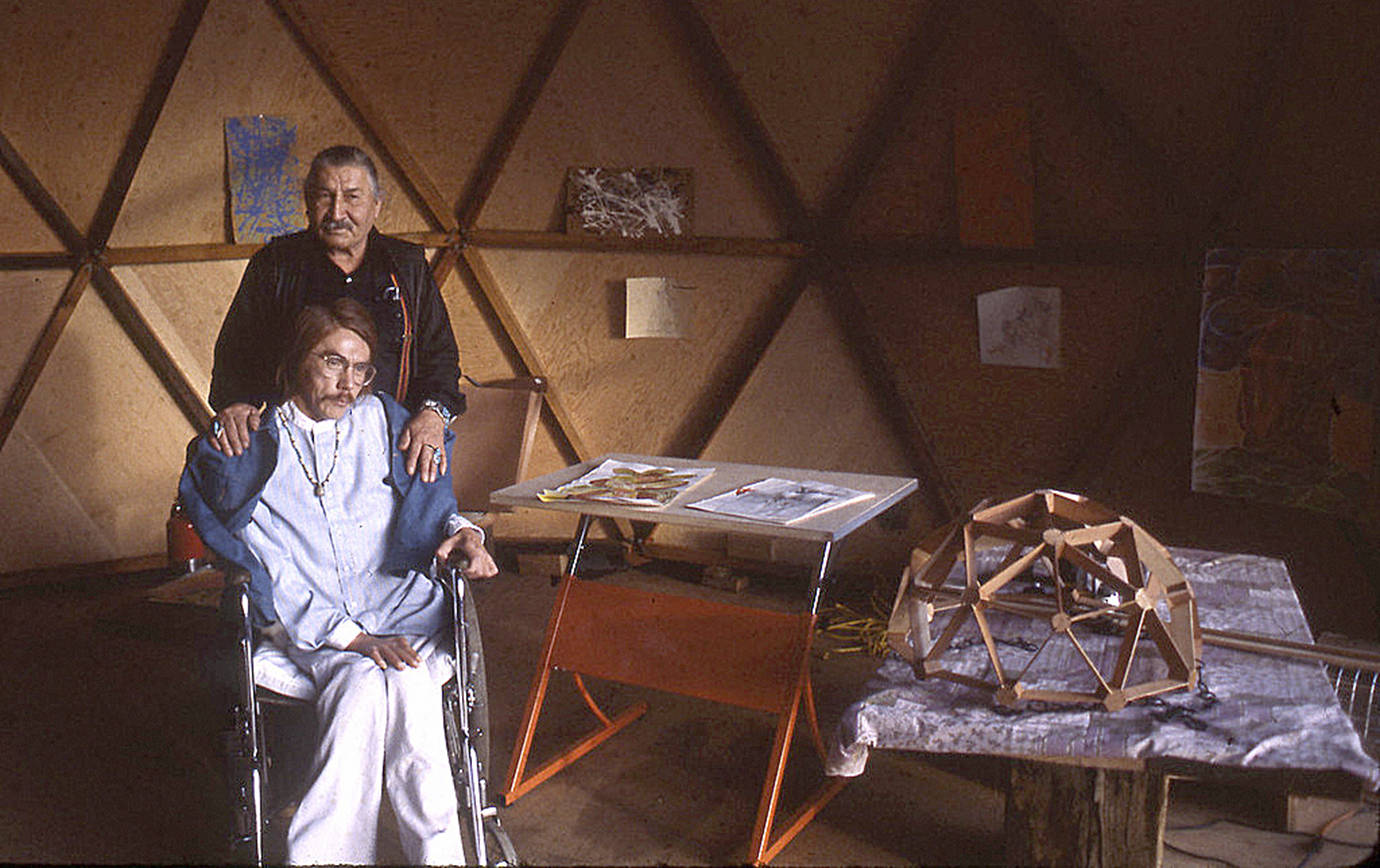Shoalwater Bay community member Judith Altruda was researching an article she wanted to write on Shoalwater Bay Indian Tribe artist Eugene Landry a few years back. Her research led to the discovery of 30 of the artist’s oil paintings, stored in the attic of a former Grayland automotive garage.
Fast forward to Sept. 17, 2021, when the tribe will present an exhibition of those works at the Nahms-chahts Heritage Museum.
Landry, born in Taholah on the Quinault Indian Nation reservation in 1937 and of Quileute and Hoh descent, was paralyzed at age 18 and spent the remainder of his life to perfecting his craft from a wheelchair in a studio where the museum now sits. He died in 1988 shortly before his 51st birthday; much of his work was lost for decades after his death.
“I wanted to write an article about him and learn about his story. So I started looking for people who had owned his art, and someone suggested a woman in Grayland might have some,” said Altruda. “So I tracked her down and she said she might have a few paintings.”
Altruda asked local photographer Marcy Merrill to come along with her to document what they found.
“As it turned out there was a huge treasure trove of his art put away in this building in Grayland,” said Altruda. “The paintings had been up there for about 25 years; there were a lot more paintings than we had expected to find.”
For much of that quarter-century there had been no power to the building. The paintings were stacked on top of each other under a sheet and had suffered some damage. Merrill photographed the paintings, and Altruda worked out an arrangement to procure the works from the current owner.
“A couple of the paintings were beyond recovery,” said Altruda, but most of them were carefully cleaned using tips from museums to remove the mold and dry them out. One of the pieces “beyond recovery” was framed and will hang as it was found in the display opening Sept. 17.
Another was a charcoal portrait of Nina Charley Bumgarner, the daughter of a very well-known Shoalwater Bay Tribe Chief, George Allen Charley.
“When I saw the charcoal drawing of Nina, I brought it to the tribe and presented it to them at an elders meeting,” said Altruda. “The tribe had it beautifully framed, and that sort of began the interest in seeing more of Gene Landry’s work.”
Someone within the tribe recommended Altruda apply for a Humanities Washington Stories Fund grant, which she did, and was awarded in 2019. The $5,000 grant was one of four awarded that year, and allowed Altruda to develop a website, eugenelandry.com, and publish a book of Landry’s art, “Portrait of Gene: An Artist, a Time, and a Tribe,” available for purchase on the website.
The tribe’s museum is located right off State Route 105, across from the casino at the turnoff toward Tokeland.
“The museum where we’re doing the display sits right on the former ground of Gene’s art studio,” said Altruda. “He had two located right in that area, one was a cabin that they moved from Washaway Beach to the reservation, and another was a geodesic dome he had built there in the ’70s. A lot of people will remember that dome, it was a real eye-catcher.”
The location offers a glimpse inside the artist as he worked on his displayed pieces.
“What’s really cool is the museum windows look out over the bay and that is exactly what Gene had seen as he was working on these pieces of art,” said Altruda.
A statement from tribal cultural specialist Kristine Torset read, “Eugene painted the world around him, and the people in it. His paintings tell a powerful story of mid-20th Century life on the Shoalwater Bay reservation.”
Landry’s art was created at a turbulent time for the tribe.
“Eugene’s art is so much more than just one man’s view of the world,” said museum cultural director Earl Davis. “It is an important index point that highlights a turning point in tribal history.”
Altruda said in the early 1960s the federal government was attempting to terminate the Shoalwaters’ official tribe status.
“Just from a historical standpoint it’s pretty interesting, going from near termination when only a handful lived here to becoming federally recognized in 1971, to becoming one of the biggest employers in Pacific County,” said Altruda.
Many of the pieces Landry produced were portraits, some of pivotal tribal members and supporters during that time.
Davis continued, “During Eugene’s time the people were at a crossroads of struggling and recovery. We have come a long way since then, but it is important to remember the effort that went into getting us here. Many of our elders, when viewing Eugene’s work, reflect upon those times and begin sharing those stories with us. I doubt that he ever intended his work to be such important cultural cues, but that’s exactly what they have become.”
The display opening reception will be held Sept. 17 from 3-6 p.m. at the museum, 4115 State Route 105 in Tokeland, and will be available for viewing during regular museum hours, 10 a.m. to 6 p.m. Tuesday through Saturday. Admission is free, masks are required.


